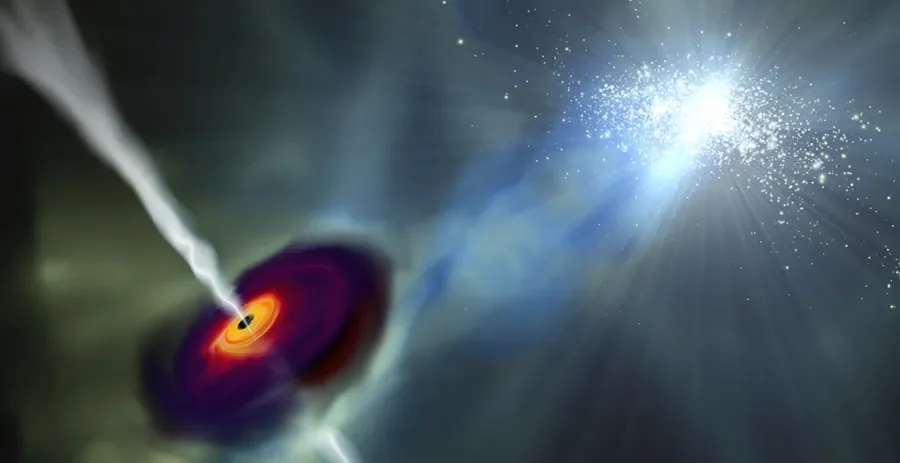

DCU scientist solves the puzzle of supermassive black hole formation in the universe
A researcher at Dublin City University, Dr John Regan of the School of Mathematical Sciences, has come up with the formula for the formation of the first supermassive black holes in the universe, a dilemma which has perplexed astrophysicists for some time.
The findings have been published in the prestigious global journal of Nature Astronomy.
When massive stars collapse they form black holes. In these instances the gravity becomes so overwhelming that atoms are crushed and a singularity forms.
The region around this point is known as the black hole. Nothing can escape the clutches of black holes, not even light - hence the term. Supermassive black holes live at the centre of most large galaxies, including our own galaxy, the Milky Way.
How these (supermassive) black holes came into being has perplexed the science community for many many years.
Dr Regan’s theoretical models, developed along with collaborators in the US (Department of Astronomy, Columbia University; Centre for Computational Astrophysics, New York; Centre for Relativistic Astrophysics, Georgia Institute of Technology; Department of Physics, New York); the UK (Institution for Computational Cosmology, Durham University and the Science and Technology Facilities Council DiRAC HPC Facility) and Finland (Department of Physics, University of Helsinki) provide a compelling solution by using the radiation from neighbouring galaxies as a catalyst for forming supermassive black hole seeds.
There have been various theories as to how supermassive black holes form, yet none have come up with a robust credible formulation; until now.
Dr Regan’s modelling, surmises that when proto-galaxies are in close proximity, the powerful radiation field of one proto-galaxy, sterilises the other, thus disabling its ability to form stars.
The sterilised galaxy continues to grow in mass however, quickly reaching a critical threshold beyond which the formation of a massive black hole is inevitable.
These massive black holes then continue to gather up any materials that come into their radius including other black holes and stars. The most ravenous grow their mass by a factor of nearly a million and it is these black holes we see as quasars shining across the length of the Universe.
Understanding how supermassive black holes form allows astronomers to put another piece of the “Universe Jigsaw” together.
Black holes are central to the evolution of galaxies (and to our own Milky Way) as they regulate star formation and planet formation and most importantly enhance our understanding of the Universe in which we live.
The modelling formula deployed by Dr Regan finally answers a question that has left the science community scratching their heads; until now.
